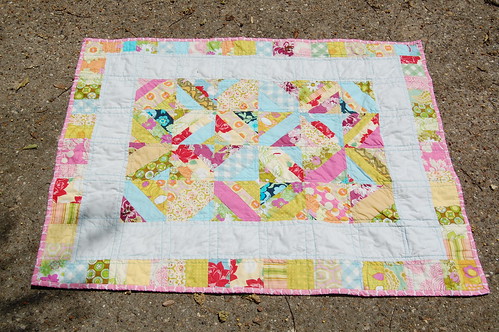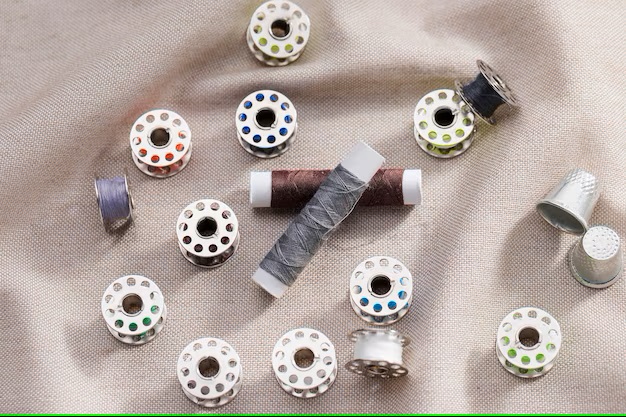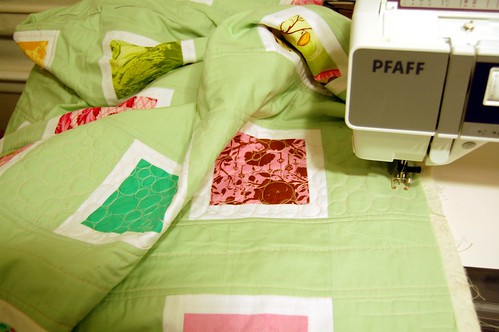Exploring the Art of Quilting Stencils for Beautiful and Unique Designs
To achieve intricate patterns with precision, opt for high-quality textile templates. Selecting durable materials will enhance the longevity of your projects, allowing for repeated use without loss of clarity. Look for templates featuring clear, bold lines to ensure ease of visibility on various fabrics.
Consider utilizing a variety of patterns, such as geometric shapes, floral motifs, or abstract designs. Each offers unique opportunities for artistic expression and can elevate the overall visual appeal of your creations. Experimenting with multiple templates can lead to unexpected combinations and stunning outcomes.
Invest time in learning about the best tools to pair with your templates. Sharp marking tools, such as water-soluble pens or chalk, can provide clean applications while ensuring that your drawn lines remain temporary until quilting is complete. Furthermore, utilizing a rotary cutter or precise scissors enhances the accuracy of your cuts around the templates.
Joining a community or workshop focused on these techniques can be beneficial. Sharing insights and experiences with others can broaden your perspective and inspire new ideas, pushing the boundaries of your craft. By continuously exploring, you will discover ways to elevate your work through thoughtful application of these templates.
Choosing the Right Quilting Stencils for Your Project
Select patterns that align with the overall theme of your fabric art. Consider geometric shapes for modern aesthetics, or intricate motifs for a more traditional look. Selecting a design that complements or contrasts with your fabric colors can enhance visual impact.
Assessing Project Size and Complexity
Evaluate the scale of your work. Large designs may overwhelm small projects, while intricate patterns can be tedious for larger pieces. Focus on adapting the stencil size to fit seamlessly into your vision, ensuring balance and harmony in the final outcome.
Material Compatibility
Different substrates react uniquely to various design templates. Opt for stencils made from materials that suit your medium, whether it be fabric, fleece, or another textile. Ensure that the stencil’s edges are clean for precision in application, avoiding bleed-through or smudging.
Experiment with samples before committing to a design on your main fabric. Test different applications, like chalk or fabric markers, to achieve the desired aesthetic. Explore seasonal trends or personal preferences to find what resonates most with your individual style.
Materials and Tools Needed for Using Stencils
Begin with high-quality templates designed for fabric application. Choose those made from durable materials such as mylar, which withstands multiple uses while retaining their shape.
Fabric Selection
Select cotton or other suitable fabric types compatible with your artistic vision. Pre-wash and press the fabric to eliminate any shrinkage or creases that could interfere with the application.
Application Tools
A variety of tools enhances the precise transfer of patterns onto fabric. Use a rotary cutter for sharp lines, alongside a self-healing mat to protect your surfaces. A staple in transferring designs is a good fabric marker or chalk pencil, providing temporary marks that can be easily removed.
Consider using a spray adhesive to keep the template in place while applying paint or ink. Depending on the technique, brushes or sponges can aid in achieving different textures and effects.
Finally, have a heat source ready, such as an iron, to set the design once complete. This ensures that colors remain vibrant and resist fading with time.
Techniques for Applying Quilting Stencils onto Fabric
Select a contrasting fabric pen or chalk tailor’s marker for clear visibility when transferring designs. Ensure the fabric is clean and pressed to avoid any misalignment during application.
Position the template on the desired area and use masking tape to secure it in place. This will prevent any movement while tracing. For delicate fabrics, consider using a clean layer of tissue paper between the stencil and the fabric to safeguard against potential marks.
When tracing, apply even pressure with a pencil or fabric marker to maintain consistency in line thickness. Avoid overly heavy pressure as it may distort the stencil pattern. For intricate designs, use a fine-tip marker to ensure accuracy.
Experiment with different application techniques, such as sponge or brush painting for filling in specific areas of the design. Use fabric paint that is compatible with your textile to ensure proper adherence and washability.
For more complicated patterns, consider creating a practice piece on scrap fabric to refine your technique before applying to the main project. This practice will help in determining the best method for your specific pattern and fabric type.
After applying the design, allow sufficient drying time if using paint or markers before moving or stitching over the stencil lines. Heat setting the design after it dries may provide longevity and prevent fading.
Maintaining and Storing Quilting Stencils Properly
Keep your forms clean by using a soft cloth or brush to remove any dust or fabric residue after each use. For deeper cleaning, a mild soap solution can be used, but ensure thorough drying to avoid moisture damage.
Store your templates flat to prevent warping or creasing. If possible, place them between two sturdy sheets of cardboard. This protects against bending and reduces the risk of scratches.
Avoid exposure to direct sunlight, which can fade colors and degrade materials. Utilize a dedicated storage container with a secure lid to shield against dust and environmental factors.
Label your containers or storage folders for quick identification. Keeping a list of your designs can also facilitate easier access and organization.
| Storage Method | Advantages | Disadvantages |
|---|---|---|
| Flat storage in a box | Prevents warping, easy access | Requires more space |
| Roll storage | Space-saving, suitable for flexible materials | Risk of creasing, harder to access |
| Hanging storage | Visible for quick reference, saves space | Potential for damage if not secured well |
Regularly check your tools for any signs of wear or damage. Repair or replace as necessary to maintain quality in your creations.
Innovative Design Ideas Using Quilting Stencils
Incorporate geometric patterns to achieve modern visual appeal. Triangles, hexagons, and circles can create eye-catching effects. Layer these shapes for depth and texture.
Layered Borders
Create unique borders by stacking different patterns. Use a floral stencil at the top and geometric shapes at the bottom for contrast. This adds interest and draws the eye around the piece.
Custom Motifs
Create personalized motifs reflecting individual stories or themes. Use initials, significant dates, or symbols that resonate personally. This personal touch enhances emotional connection.
- Combine multiple designs within a single quilt for a patchwork effect.
- Experiment with scale; large stencils yield bold statements, while smaller ones can add subtleties.
- Position stencils asymmetrically to break traditional symmetry and update the look.
Utilize negative space to enhance the chosen patterns. Leaving areas unembellished can create striking contrasts and highlight the intended designs.
Color Variations
Experiment with color gradients or ombre effects using stencils. Choose complementary colors for a harmonious look, or opposing colors for a more dynamic design. This approach can transform simple shapes into complex visual experiences.
- Use fabric paint or markers for intricate detail.
- Stencils can also serve as guides for stitching, producing polished outlines.
Incorporating these strategies will elevate your creations, making compelling and unique pieces that stand out.
Common Mistakes to Avoid When Using Quilting Stencils
Ensure that the fabric is free from wrinkles and creases before applying any patterns. This prevents distortion of the design and results in clean lines.
Choosing the wrong adhesive can lead to problems with the stencil shifting during use. Opt for a temporary spray or removable adhesive specifically designed for fabric applications.
Skipping the test run on a scrap piece can cause frustration. Always practice on a sample to gauge the look and ensure the technique is sound.
Inadequate securing of the stencil can result in slippage. Use weights or fabric clips to hold the stencil steady while working.
Overlooking the importance of the right thread tension may produce uneven stitches. Adjust tension appropriately based on the thread type and fabric used.
Neglecting to clean the stencil leads to residue build-up, affecting the quality of your work. Regularly wipe the stencil with a damp cloth to maintain clarity.
Applying too much pressure while stitching can lead to fabric puckering. Maintain a steady, gentle approach to avoid distorting the material.
Failing to read manufacturer instructions can lead to errors. Familiarize yourself with product specifics to achieve the best results.
Rushing through the preparation phase often results in mistakes. Allocate sufficient time for set-up to ensure a smooth process.
Not considering contrast in thread color may diminish the visibility of the design. Choose shades that stand out against the fabric for maximum impact.
Q&A: Quilting stencils
How do full line stencils help a beginner quilter create beautiful designs using a domestic machine?
Full line stencils help a beginner quilter by offering pre-marked patterns that can be easily transferred onto a quilt top using tools like a pounce pad or water soluble pen. These stencils guide the quilter during machine quilting, making it easier to sew consistent lines and create beautiful designs even on a basic home sewing machine.
What are the advantages of using free motion quilting designs with plastic stencils for quilting on a finished quilt?
Using free motion quilting designs with plastic stencils allows quilters to trace complex motifs onto a finished quilt and follow the lines with more control. This method is especially helpful during free-motion quilting, as it provides structure while allowing for creative expression, whether on a longarm or a domestic machine.
How does continuous line quilting benefit quilters working with edge to edge patterns on large quilt tops?
Continuous line quilting benefits quilters by reducing the number of starts and stops across large quilt tops, making edge to edge patterns smoother and more efficient. This technique works well with machine quilting and longarm quilting, ensuring consistent stitches and streamlined quilting design across the entire surface.
Why is a pounce pad often used when applying stencil design onto quilt tops for machine quilting?
A pounce pad is used to apply stencil design onto quilt tops because it evenly distributes chalk through full line stencils or plastic stencils, clearly marking the quilting pattern. This method is especially effective for machine quilting and allows for quick and accurate pattern placement before stitching.
How can a beginner use a sewing machine and straight line quilting techniques to complete a quilt top?
A beginner can use a sewing machine with straight line quilting techniques by marking lines with a water soluble pen and following them with a walking foot. This approach simplifies machine quilting and helps the quilter develop confidence while producing clean, modern quilting designs that complement many quilt patterns.
What makes free-motion quilting on a home sewing machine a flexible choice for quilters who want to explore stencil-guided quilting?
Free-motion quilting on a home sewing machine is a flexible choice because it allows quilters to follow custom or stencil-guided patterns with freedom of movement. With the feed dogs lowered and a darning or free-motion foot attached, the quilter can experiment with intricate shapes, continuous line quilting, and varied filler motifs at their own pace.
How does using a quilting template enhance precision in both hand quilting and machine quilting stencils?
Using a quilting template enhances precision by providing consistent shapes and repeatable motifs that can be easily traced onto the quilt top. In hand quilting, templates ensure even spacing and symmetry across the design, while in machine quilting stencils, they help guide the stitching path whether using a domestic machine or longarm setup.
Why do quilters often choose machine quilting stencils over freehand methods when working with complex quilting template designs?
Quilters often choose machine quilting stencils over freehand methods when working with complex quilting template designs because stencils provide a reliable visual guide. This reduces errors, maintains uniformity in repetitive patterns, and allows both beginners and experienced quilters to achieve professional-looking results in less time.



